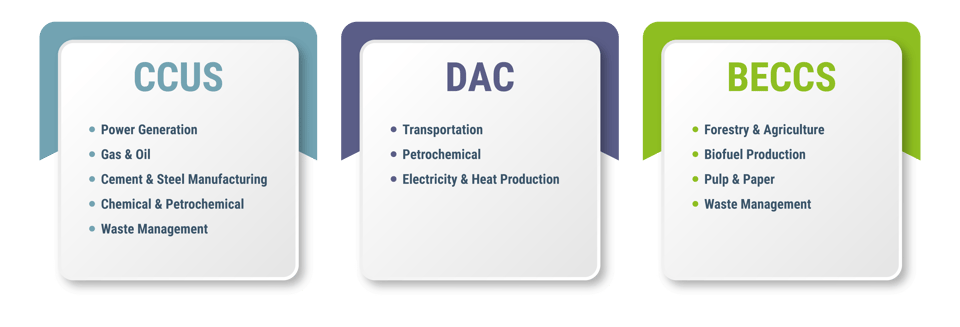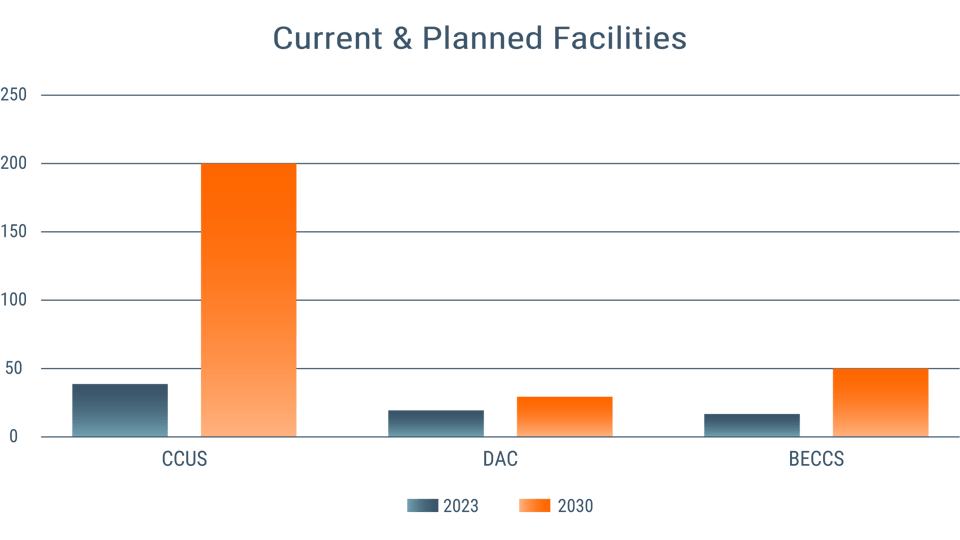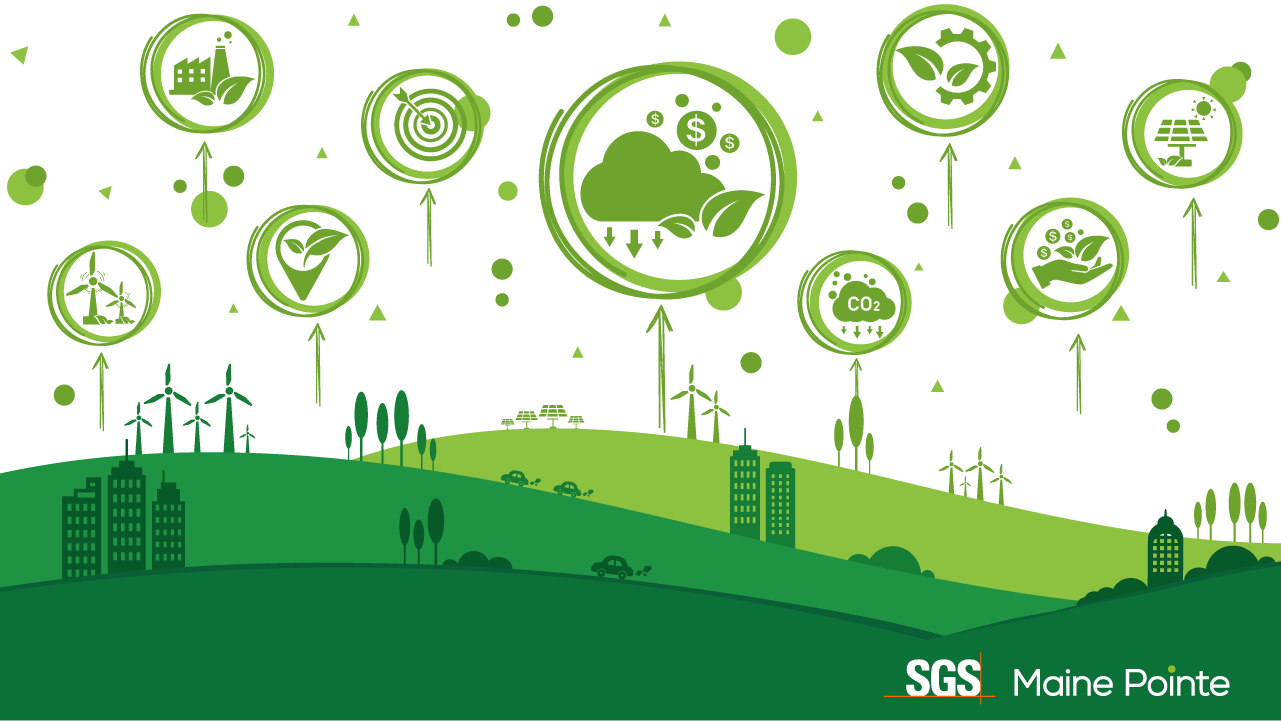Sustainable GHG Emissions Control: Ensuring Your Company's Future
The Importance of Integrating Sustainability into Your Business Model
Sustainability as an add-on is doomed to fail. It costs too much, is too hard to measure, and is easy to shove aside for other priorities. But when sustainability is an integral part of products and services, it also becomes an integral part of a company’s ability to improve profits, customer relationships, and regulatory compliance.
Perhaps the most difficult goal the world has set itself is net zero emissions from greenhouse gases. Companies must control greenhouse gas (GHG) emissions to meet regulatory requirements and pressure from consumers, employees, private equity investors, and stakeholders. The strategies you use for selecting, investing in, and maintaining GHG emissions control can act as a template for all your sustainability efforts.
With a limited budget and no crystal ball to predict the future, you face the possibility that investing in expensive, new GHG emissions control technologies could compromise your company’s future. While these challenges affect every industry differently, some questions and answers are universal.
Understanding Your Risk in the Greenhouse Gas Protocol
Do you know your risk?
The Greenhouse Gas Protocol requires companies to control emissions from sources they own or control, such as machinery they operate (known as Scope 1); from energy they purchase and use (Scope 2); and from products they buy, use, or dispose of upstream and downstream (Scope 3). While Scope 1 and Scope 2 emissions are relatively easy to control, Scope 3 generates the greatest amount of greenhouse gas (GHG) emissions, more than Scope 1 and 2 combined.
Strategies to Evaluate Risk
Companies in the industrial, energy, transportation, and agricultural sectors account for over 80% of global greenhouse gas emissions. However, somewhere along their supply chain, every company will interact with the industrial, energy, transportation, or agricultural sectors (Scope 3). Therefore, every industry is at risk of violating the Greenhouse Gas Protocol.
To evaluate the risk in your organization, you need:
- Create visibility into your entire plan-make-buy-move supply chain to understand how your choices currently and potentially affect each link
- Engage in ally sourcing, working with suppliers who understand your carbon reduction goals and the regulations you must comply with.
Should you wait for the optimum emissions control technology?
Carbon is the GHG with the greatest environmental impact. Currently, three technologies are available to control carbon emissions: carbon capture, utilization, and storage (CCUS), direct air capture (DAC), and bioenergy with carbon capture and storage (BECCS).
CCUS technology captures greenhouse gases and then sends it to underground storage in onshore or offshore geological formations; or reuses it as a feedstock; or both. Direct air capture takes CO2 directly from the air. BECCS captures C02 from biogenic sources; for example, emissions that occur when biofuels are produced or used in manufacture.

All three technologies are being developed, but are still relatively unproven. If you want to lower greenhouse gas emissions but have not yet invested in the sustainability, let alone a specific technology, the unproven nature and lack of CCUS, DAC, and BECCS plants should worry you. What will you do when the few suppliers direct their carbon capture technologies toward those companies who showed forethought?

Source: International Energy Agency
Preparing for GHG Emission Reduction
Rather than simply waiting for the right technology, you need to start preparing now and situating your company to take advantage of opportunities as they arise. You should:
- Form partnerships and collaborations with suppliers, competitors, and customers to gain volume-based discounts and share expertise, including information on your industry’s most and least significant sources of GHG emissions.
- Developed a supply chain due diligence playbook to reduce the risk of working with or investing in partnerships and innovative technology companies.
Measuring Your Company's Sustainability Needs
How can you measure the extent of your need? A sustainability audit assesses your company's current practices, processes, and supply chains to identify areas where sustainability improvements should and can be made. The audit helps to identify the most significant sources of GHG emissions and enables you to direct your efforts toward mitigating them. It has the added benefit of identifying other areas where sustainability initiatives can be undertaken; for example, waste reduction.
Conducting a Sustainability Audit: The Need for Reliable Data
For any audit to make sense you need data: in this case, a baseline of your current Scope 1, 2, and 3 emissions and reliable measures of your progress to net zero. Digging out trustworthy data requires a combination of people policies and technology:
- Set clear sustainability goals and KPIs. Define specific, circumscribed, and measurable sustainability targets that align with your company's values and long-term vision. Set one goal at a time; for example, minimizing waste, conserving water, or promoting renewable energy.
- Engage every part of your organization in meeting those goals. Involve staff at every level, seeing innovative ideas in-house; develop a common vocabulary (when is waste not waste?); and provide training.
- Use advanced analytics and artificial intelligence (AI) to make your supply chain visible and track your efforts. You need to continually access and analyze data from your company, your suppliers, and the technology you use to control GHG emissions. For example, data analytics can tell you if your GHG technology is delivering on promised levels of emission control.
How do you choose the right technology?
When the time comes, what criteria should you use for selecting the right technology for your company, given your industry and what is available in your region?
Considerations in Technology Selection
Cost, scalability, and compatibility with your existing processes are only the start of a complete evaluation. While many technologies are being built U.S. and funded by U.S. companies like Microsoft, your enterprise might extend across borders, with plants in several countries. Does every country have the same standards for carbon capture, does your chosen technology meet all those standards, and is every plant you oversee prepared to use it?
You must consider the environmental impact of the technology itself. For example, DAC technology uses less land and water than CCUS or BECCS. But all technologies use water to some extent. Some solutions might be more energy efficient. You have to weigh their effects on the environment, both positive and negative.
How much training will be required to implement and maintain the technology? How many innovations are on the way? Every upgrade may require re-skilling your workforce.
The technology is one concern; the other is the supplier of the technology. Is the supplier doing all they can to reduce their own emissions during procurement, manufacture, and transportation? Is the supplier located close to where you need the technology or is the supply chain long in both geography and time?
Among other areas of expertise, answering those questions involves:
- Procurement management
- Network design and footprint optimization
- Supplier performance management
- GHG carbon accounting
Maximizing ROI on Your Sustainability Investment
How can you ensure your investment has the highest ROI?
Preparation is key to understanding where your sustainability investment will have the greatest effect on GHG emissions. To gain a return on your sustainability investment—above and beyond avoiding fines—you need:
- Asset utilization and maintenance to extend equipment life and efficiency
- Supplier optionality to find ally suppliers
- Complexity reduction, quality management, and yield management to reduce waste and the amount of emissions from manufacture
- Design and program excellence to incorporate sustainability into everyone’s mindset
- Network, fleet, and last mile optimization to reduce emissions
- Advanced data analytics and simulation to ensure your initiatives are delivering the controls you expect and to anticipate potential new sources of emissions
- Owner, responsible, consult, inform (ORCI) initiatives to ensure sustainability initiatives are understood, followed, and maintained.
Strategies for an Effective Sustainability Investment
These strategies will not only maximize the ROI on your sustainability investment but enhance efficiency, accountability, and productivity across your enterprise.
Seeking Help in Sustainability and GHG Emission Control
Where can you find help with these questions?
Understanding, evaluating, and choosing the sustainability goals and GHG reduction technology that are right for your organization is difficult.
SGS Maine Pointe: Your Partner in Sustainability
SGS Maine Pointe brings a unique combination of expertise to those efforts.
For a client in the designs and manufactures packaging for toxic liquids, SGS Maine Pointe drew on our expertise in supply chain optimization consulting, data analytics, and business consulting, including due diligence with a focus on sustainability. We evaluated alternative suppliers using ESG as one of the selection criteria and ensuring that all suppliers chosen were ESG certified. We re-evaluated their logistics using similar criteria, and ultimately uncovered more than $60 million in potential savings while shoring up the company’s sustainability efforts.
A major energy company wanted to reduce its risk in partnering with CCUS companies to control carbon emissions. In this case, they sought out SGS Maine Pointe for our due diligence, commercialization ramp-up, and supply chain expertise. We built a replicable process for finding scalable technologies and created a playbook for evaluating companies, supply chains, suppliers, and potential partners, giving the client a competitive advantage.
When you invest in any sustainability effort, from reducing fuel usage or manufacturing waste to controlling GHG emissions, you are making a financial commitment that depends on cooperation up and down your supply chain, internally and with suppliers. By understanding your risk, planning ahead, accurately measuring your need, and focusing on strategies that increase ROI, you ensure your investment in GHG emissions control will secure your company’s future as well as the future of the planet.

